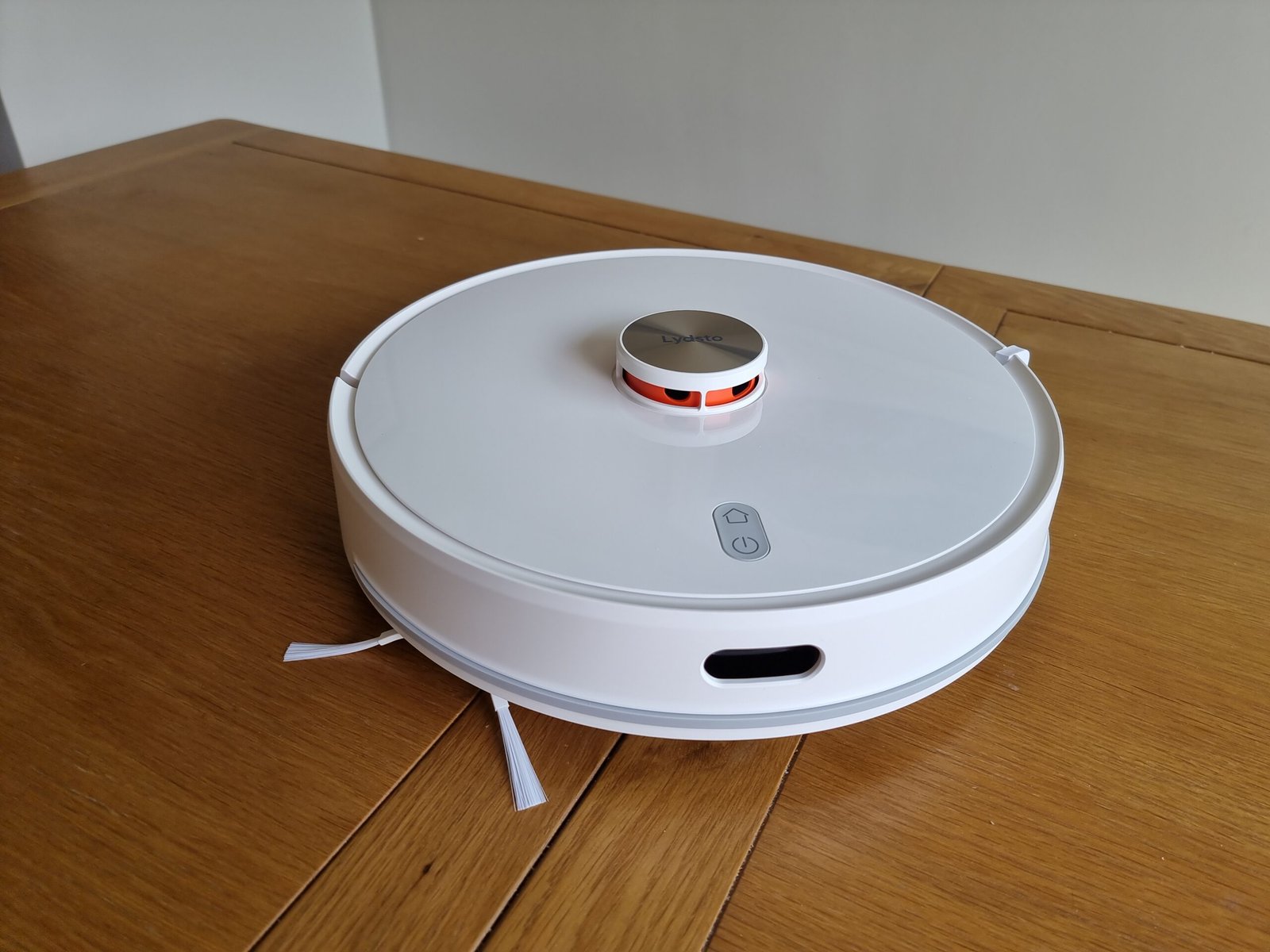Imagine leaving your house for work, vacation, or just a long day out, and instead of worrying about your beloved pets, you have a tireless machine caring for them—no complaints, no sick days, and no “I forgot to lock the gate” moments. It sounds like something out of a futuristic movie, yet robotic pet sitters are rapidly becoming a reality. But as these sleek, blinking machines roll, walk, or hover into our homes, one question remains: can they truly handle the beautiful messiness and unpredictable chaos of real animals? The thought of a robot facing a determined cat on a kitchen counter or a dog with a muddy mission is both hilarious and a little unsettling. Let’s dive into the fascinating, sometimes wild world of robotic pet sitters and see if they’re truly ready for the fur, feathers, and frenzy of real pet life.
The Birth of Robotic Pet Care
For decades, pet owners have juggled busy schedules and the guilt of leaving their animals alone. The demand for reliable care gave birth to the first wave of robotic pet sitters. Early models were little more than automated feeders or water dispensers, but the idea sparked imaginations worldwide. As technology advanced, so did ambitions: why not give pets consistent, interactive attention even when humans are away? The vision was simple—robots could fill in the gaps, offering play, comfort, and even medical monitoring. What began as a convenience has quickly evolved into a movement, with inventors racing to create machines that can truly connect with our four-legged friends.
How Do Robotic Pet Sitters Work?
Modern robotic pet sitters are marvels of engineering, blending sensors, cameras, and artificial intelligence. Most models are equipped with wheels or legs, allowing them to roam the house, locate pets, and interact through toys or treats. Some even have speakers to mimic a human voice, offering commands or soothing words. Cameras let owners check in remotely, while AI software learns each pet’s habits over time. It’s not just about dispensing kibble—these robots can recognize when a pet needs company or when it’s getting into trouble. The mix of hardware and smart software aims to create a seamless experience that feels almost like a real human sitter.
What Sets Them Apart from Traditional Pet Sitters?
Unlike human sitters, robotic pet sitters never get tired, distracted, or forgetful. They’re programmed to follow routines precisely, ensuring pets get fed on time, have access to water, and receive scheduled play sessions. There’s also no risk of someone accidentally leaving a door open or losing a house key. However, robots lack the intuition and emotional connection that comes naturally to humans. A person might notice subtle changes in a pet’s mood or spot an injury, while a robot could miss these signs unless specifically programmed to detect them. This trade-off between reliability and empathy sets the stage for an ongoing debate.
Real-World Examples and Popular Models
Across the globe, companies are releasing increasingly sophisticated robotic pet care devices. Models like the Ebo Cat Companion can chase cats with laser pointers, while the VARRAM Pet Fitness Robot dispenses treats and encourages dogs to play. Some units even feature two-way video so owners can chat with their pets during lunch breaks. In Japan—where technology and pet culture often collide—robotic pet sitters are already finding homes, particularly among busy urban professionals. The sight of a robot rolling across the floor, gently nudging a squeaky toy toward a curious puppy, is becoming more common—and more adorable—by the day.
Understanding Animal Behavior: Can Robots Keep Up?
Animals are notoriously unpredictable, and their behaviors can baffle even the most experienced humans. Cats leap into places they shouldn’t, dogs shred pillows for fun, and birds can outsmart simple locks. Robotic pet sitters face a monumental challenge: understanding and adapting to this chaos. Engineers are training AI systems to recognize different animal postures, vocalizations, and even facial expressions. Some robots can detect when a pet looks anxious or is acting out, triggering calming actions or alerts. But despite these advances, no machine can yet fully grasp the mysterious motives behind a cat’s midnight zoomies or a dog’s sudden urge to dig.
Adapting to Different Species and Personalities
Pets come in all shapes, sizes, and temperaments. What works for a playful Labrador might terrify a shy rabbit or annoy a grumpy cat. Robotic pet sitters are being designed with customizable programs, allowing owners to set preferences for feeding, playtime, and interaction levels. For multi-pet households, some robots can manage schedules for several animals, switching modes depending on who they encounter. While the technology is still catching up to the endless variety of animal personalities, progress is steady. The dream is a single device that can switch from tossing a ball for a dog to offering gentle grooming to a cat—all without missing a beat.
Safety Concerns and Ethical Considerations
Safety is a top priority for any pet device. Robotic pet sitters must be tough enough to withstand curious paws and claws, but gentle enough to avoid harming animals. Engineers are investing in soft materials, rounded edges, and emergency shut-off features. There’s also the question of surveillance—robots often use cameras and microphones, raising privacy concerns for humans and animals alike. Some experts worry about the long-term impact of replacing human care with machines, especially for social animals that crave real connection. Balancing safety, privacy, and ethics is an ongoing challenge as these devices move from novelty to necessity.
AI and Machine Learning: Teaching Robots Empathy

The holy grail of robotic pet sitting is emotional intelligence. By harnessing machine learning, inventors are teaching robots to recognize subtle cues—like a wagging tail or a drooping ear. Over time, these machines can adjust their responses, offering more play when a pet is bored or a calming voice when it’s frightened. Some developers are collaborating with animal behaviorists to fine-tune algorithms, making interactions feel more natural. While no robot can truly feel empathy, the goal is to mimic it closely enough that pets receive comfort and attention when they need it most. This blend of science and compassion is driving some of the most exciting breakthroughs.
Robots vs. Real-Life Chaos: Funny Fails and Surprising Triumphs
If you’ve ever watched a robot try to herd a stubborn cat or dodge a dog’s enthusiastic tail, you know real-life chaos can overwhelm even the smartest machines. Social media is flooded with hilarious videos of robots getting stuck under couches, chased by puppies, or outwitted by clever birds. Yet, there are also inspiring stories—robots soothing anxious animals during thunderstorms or keeping lonely pets engaged for hours. Each win and fail reveals more about what pets need and how technology can help. Sometimes, the chaos is the best teacher; engineers tweak designs after every mishap, learning from the wild unpredictability of real animals.
The Emotional Impact on Pets (and Owners)
For many people, pets are family, and trusting their care to a robot is a leap of faith. Some animals adjust quickly, treating the robot as a new toy or even a companion. Others are wary or confused, especially at first. Owners often report a mix of relief and guilt—grateful for the help, but worried about missing out on important bonding moments. Over time, some pets become attached to their robotic caregivers, waiting by the charging station or responding to familiar sounds. The emotional impact is complex and varies from one household to another, but the stories are as heartwarming as they are surprising.
Accessibility and Cost: Who Can Afford Robotic Pet Sitters?

While robotic pet sitters promise convenience, they come at a price. Advanced models with cameras, AI, and interactive features can cost hundreds or even thousands of dollars. For now, this puts them out of reach for many families, especially those already stretched by pet care expenses. However, as technology matures and production scales up, prices are slowly dropping. Some companies offer payment plans or rental options, making robotic sitters more accessible. There’s hope that, like smartphones or smart home devices, these gadgets will soon become common in households of all budgets, ensuring more pets get the attention they deserve.
Integrating Robots with Smart Homes

Smart homes are changing the way we live, and robotic pet sitters are quickly becoming part of this connected ecosystem. Many devices now sync with home assistants like Alexa or Google Home, allowing owners to control robots with simple voice commands. Some robots can even communicate with automatic doors, thermostats, and security systems, creating a seamless environment for pets. Imagine a robot that not only feeds your cat but also adjusts the temperature or dims the lights for nap time. The integration of robotics with smart home technology is making pet care more effortless and intuitive than ever before.
The Future of Remote Pet Parenting
As remote work and travel become more common, the need for reliable pet care grows. Robotic pet sitters offer a solution for parents who can’t always be home but want to stay involved in their animals’ lives. With mobile apps, owners can check in, give treats, or even play games with their pets from across the world. This sense of connection brings peace of mind and helps maintain strong bonds, even at a distance. The idea of remote pet parenting was once science fiction, but today it’s an everyday reality for tech-savvy animal lovers.
Environmental Impact and Sustainability
With the rise of any new technology, it’s important to consider the environmental footprint. Robotic pet sitters require electricity, batteries, and the use of plastics and metals. Some companies are taking steps to make their devices more sustainable, using recycled materials or designing robots for easy repair and recycling. Energy-efficient models minimize power use, and solar-powered chargers are being tested for outdoor pets. The push for green innovation is reshaping the future of pet technology, ensuring that caring for animals doesn’t come at the expense of the planet.
What Pet Owners Are Saying
Feedback from real pet owners drives much of the innovation in robotic pet sitters. Online forums and reviews are filled with stories of successes and challenges. Some owners rave about the newfound freedom and peace of mind, while others share tips for helping nervous pets adjust. Critiques often focus on battery life, noise levels, or the learning curve for both humans and animals. These honest opinions shape the market, pushing companies to improve reliability and user-friendliness. The growing community of robotic pet parents is a testament to how quickly technology is changing the way we love and care for our furry friends.
Are Robotic Pet Sitters Ready for Prime Time?
The world of robotic pet sitters is evolving at lightning speed. With every new model, engineers get closer to bridging the gap between cold metal and warm companionship. While no machine can yet replace the unique bond between pets and their people, robotic sitters offer a promising safety net for busy, modern lives. They’re learning, adapting, and sometimes even surprising us with their ability to handle real animal chaos. The question is no longer if they’ll become mainstream, but how fast—and how well—they’ll fit into our lives. Are you ready to trust a robot with your pet’s wild heart?




